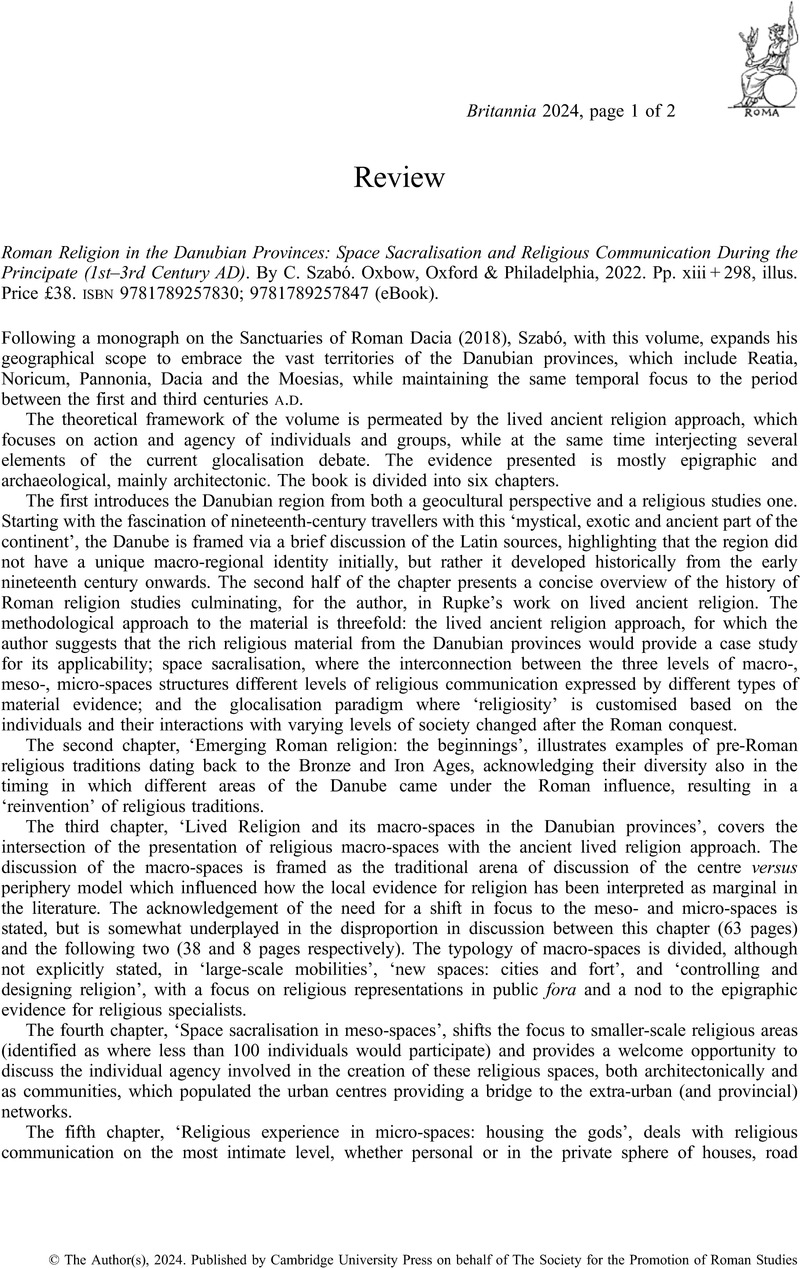No CrossRef data available.
Roman Religion in the Danubian Provinces: Space Sacralisation and Religious Communication During the Principate (1st–3rd Century AD). By C. Szabó. Oxbow, Oxford & Philadelphia, 2022. Pp. xiii + 298, illus. Price £38. isbn 9781789257830; 9781789257847 (eBook).
Review products
Roman Religion in the Danubian Provinces: Space Sacralisation and Religious Communication During the Principate (1st–3rd Century AD). By C. Szabó. Oxbow, Oxford & Philadelphia, 2022. Pp. xiii + 298, illus. Price £38. isbn 9781789257830; 9781789257847 (eBook).
Published online by Cambridge University Press: 10 May 2024
Abstract
An abstract is not available for this content so a preview has been provided. Please use the Get access link above for information on how to access this content.

Information
- Type
- Reviews
- Information
- Copyright
- Copyright © The Author(s), 2024. Published by Cambridge University Press on behalf of The Society for the Promotion of Roman Studies

